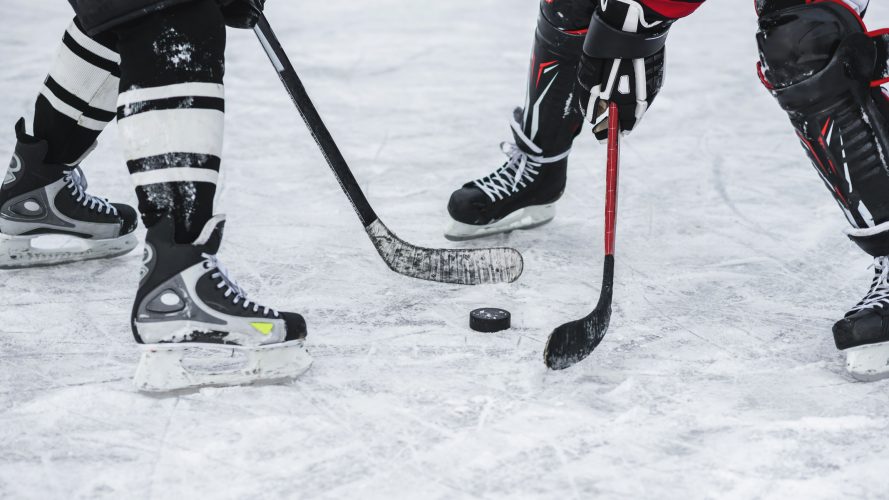Hockey Injury Lawsuit Sparks Discussion About Player Safety
Isaac Dixon was an elite athlete with a bright future. He was a defenceman for the Grand Falls Rapids of the Maritime Junior Hockey League (“MHL”), a junior-A level subsidiary of the Canadian Junior Hockey League (“CJHL”) and Hockey Canada. At 18 years old, his career was brought to a sudden, tragic end.
On December 30, 2020, during a game between the Rapids and the Edmunston Blizzard – another MHL team – Dixon was bodychecked against the boards in what was a fairly routine play. Dixon, a defenceman, went to his own corner to retrieve the puck, while a Blizzard forward checked Dixon’s upper body into the boards. This forceful collision caused a severe injury to Dixon’s L1 vertebra, leaving him paraplegic. The Rapids posted a note on Twitter on January 5, 2021 that Dixon had emergency spinal surgery at The Moncton Hospital.
After months of intensive rehabilitation, Dixon is now able to walk and even play his other favourite sport – golf. In fact, Isaac has joined Paragolf Canada as a New Brunswick amateur golfer and has competed in adaptive golf tournaments for individuals with disabilities.
Despite his incredible progress, Dixon will never be able to play hockey again. Furthermore, Dixon will never be the same; the effects of this devastating injury will affect him for the rest of his life.
The Lawsuit
The Parties
Dixon’s lawyer, Lyndsay Jardine, informed CBC that Dixon is suing 7 defendants in a personal injury/negligence case in the New Brunswick Superior Court. The defendants are:
- The MHL;
- The CJHL;
- AIG, the insurer for Hockey Canada;
- Hockey Canada;
- The Rapids;
- The Blizzard; and
- Jeremy Duguay, the player who hit Dixon.
Why is each party being sued?
The cause of action against the MHL and CJHL is that these two parties, jointly and severally, were negligent in their failures to properly enforce the rules of play and, thereby, ensure safety protocols.
The cause of action against AIG for wrongly denying his insurance claim. The policy provided for the availability of $1.5 million in coverage for similar injuries, as well as $50,000 for players injured in-game; despite this, Dixon did not receive any coverage. Relatedly, the cause of action against Hockey Canada is that Hockey Canada did not fulfill its obligation to ensure that Dixon could recover money from AIG to cover his medical expenses.
Dixon’s claim alleges that the Rapids’ training and medical staff failed to follow proper safety and emergency protocols after Dixon’s injury. Dixon claims that the care team for the Rapids failed to keep him still while examining him on the ice and while transporting him onto the stretcher and out of the arena.
The cause of action against the Blizzards is that they played a role in the injury by allowing (either passively or by way of encouragement) Duguay to execute a dangerous hit on Dixon. Duguay is being sued for the hit itself.
The Case of Steve Moore
Dixon is not the first to raise legal questions surrounding player safety in elite level hockey. In 2004, Vancouver Canucks enforcer, Todd Bertuzzi, pleaded guilty to assault causing bodily harm against Colorado Avalanche rookie, Steve Moore, when Bertuzzi delivered a violent blow to Moore’s head and neck. Moore sustained a concussion and three broken vertebrae.[i]
Moore’s career ended not even a full season into his NHL career. In 2006, Moore and his family filed a civil claim in the Ontario Superior Court of Justice against Bertuzzi, the Canucks, and Canucks corporate ownership. The Moore family sought $68 million in damages, comprised of $38 million for lost hockey wages, and punitive and general damages, plus $30 million in future lost wages post-retirement from hockey. After a long and winding road, the case settled in 2014.
Conclusion
With Dixon’s case pending in the New Brunswick Superior Court and the defendants preparing their defences, many hockey fans are left wondering what these kinds of cases mean for the future of player safety in Canada’s favourite game.
The biggest questions are undoubtedly left for the teams and leagues to answer. Most importantly, Dixon’s lawsuit will examine whether hockey teams and/or hockey leagues owe a duty of care to adult players who are not paid to play. The CJHL and its associated teams are barred from compensating players for their play in order to preserve their NCAA eligibility. In this way, the defendant teams and leagues could argue that their players are there voluntarily and have chosen to accept the risk of injury. What, then, about the medical staff for the Rapids? Certainly they owed Dixon a duty of care…right?
It remains to be seen what Dixon’s case will bring to light.
[i] R v Bertuzzi, 2004 BCPC 472 at paras 21-9.
